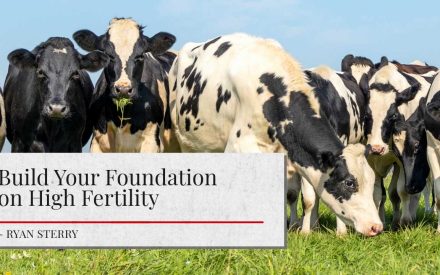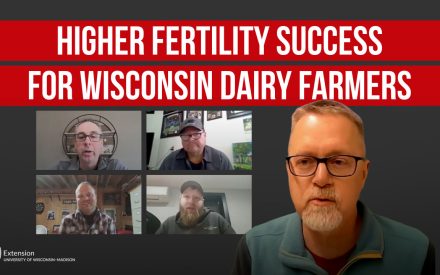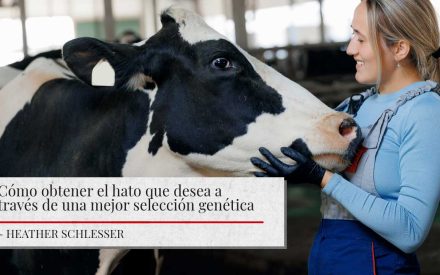Early in April, the Council for Dairy Cattle Breeding (CDCB) released one of the three-times-a-year updates to sire summaries. It can be a lot like looking through seed catalogs to find what bulls to select for the future of your herd. The rankings of bulls keep on getting better, and fast! The genetics staff have so many animals to choose from and such outstanding tools such as genomic data that bulls that would have been breed leaders just a few years ago, don’t even make the cut to be offered to dairy producers today.
Beta-casein and the rise of A2 milk
One trait that has been trending is beta-casein, the type of milk that we now see marketed in stores as A2A2. Research has been inconclusive about if A2 milk really helps with the digestion of milk; many consumers have had difficulty digesting dairy products. Some people who have lactose intolerance will say that A2 has helped them. A2 milk is not lower in lactose than milk not labeled as A2. However, since many people feel they are lactose intolerant without a clinical diagnosis, it could be that the A2 is doing something else for them other than just a placebo effect.
Just a few years back the A1 gene was the most common in Holstein cattle. There was a mix of animals homozygous for A1 (A1A1), heterozygous (A1A2) and a small group of animals that were A2A2. The A2 gene was more common in other breeds.
Today most sires in US AI programs are A2A2. A quick survey of five AI stud websites for Holsteins found over 800 bulls that were A2A2, by far the most common combination of beta-casein traits offered in AI today.
Holstein genetics are shifting to A2A2
A few take-home messages from this. You probably don’t need to be concerned about A2 beta-casein, in part because somebody else is already looking out for you. We are not sure that it is really a superior milk protein, but it is clear from the number of bulls now offered that the Holstein breed is quickly moving to be an A2A2 only breed. Some people will promote the superiority of milk from other breeds, because they had a higher level of A2 in the population than Holstein before the interest in A2 milk started. Genetics shift quickly and it is no longer a major advantage in any breed as far as having more A2.
Polled (hornless) traits are becoming sought after
Most traits that we select for such as protein yield of fertility are determined by many (hundreds or thousands) of genes. In addition to A2, polled (hornless) is a trait determined by a single gene. The interest in polled is increasing as the Farmers Assuring Responsible Management Program (FARM) criteria become more particular about dehorning programs.

Polled may have a bigger impact on your farm than A2, but it is harder to select for than A2. In most AI programs under 20% of bulls are polled, maybe about 5% are homozygous polled. This is much lower proportion than A2 but the current level is up considerably from in the past, we may soon be over the tipping point in polled as well. Polled is a dominant trait, so achieving a high level of polled cattle happens quickly once mass selection for it is begun, but polled does not breed as true as red hair color which is a single gene recessive trait. A few other genes affect red hair color but it is mainly due to one gene.
Other single trait selection
Other single gene traits to select for? You can select for other milk quality traits such as Kappa casein, said to be associated with the cheese yield of the milk or the slick gene, which we have introduced to Holsteins from tropical adapted breeds. Slick cattle have shorter hair and are more heat tolerant than cattle without the gene.
More traits continue to be developed for dairy cattle selection. Canadian Holsteins now have measures for methane efficiency, feed efficiency and body maintenance requirements. Selection for cows that are more efficient feed converters is a highly heritable trait that we are just now beginning to select for.
Including single traits in your selection criteria can allow you to continue to make genetic progress while also staying relevant to current markets. Continuing to refine the focus of which traits you are selecting allows you to make balanced progress which is good for long-term sustainability.
Resources
A2 Milk and A2 Genetics, University of Minnesota https://extension.umn.edu/dairy-milking-cows/a2-milk-and-a2-genetics
Cole, J. B., & VanRaden, P. M. (2018). Symposium review: Possibilities in an age of genomics: The future of selection indices. Journal of dairy science, 101(4), 3686-3701.
Reviewers:
Jackie McCarville, regional dairy educator for Grant, Green, Iowa, & Lafayette County
Lyssa Seefeldt, regional dairy educator for Chippewa, Dunn, & Eau Claire County
Ryan Sterry, regional dairy educator for Barron, Pierce, St. Croix County

 Build Your Foundation on High Fertility
Build Your Foundation on High Fertility Getting the Dairy Herd You Want Through Improved Genetic Selection
Getting the Dairy Herd You Want Through Improved Genetic Selection ▶️ Watch: Higher Fertility Success for Wisconsin Dairy Farmers: Panel Discussion
▶️ Watch: Higher Fertility Success for Wisconsin Dairy Farmers: Panel Discussion Cómo obtener el hato que desea a través de una mejor selección genética
Cómo obtener el hato que desea a través de una mejor selección genética


